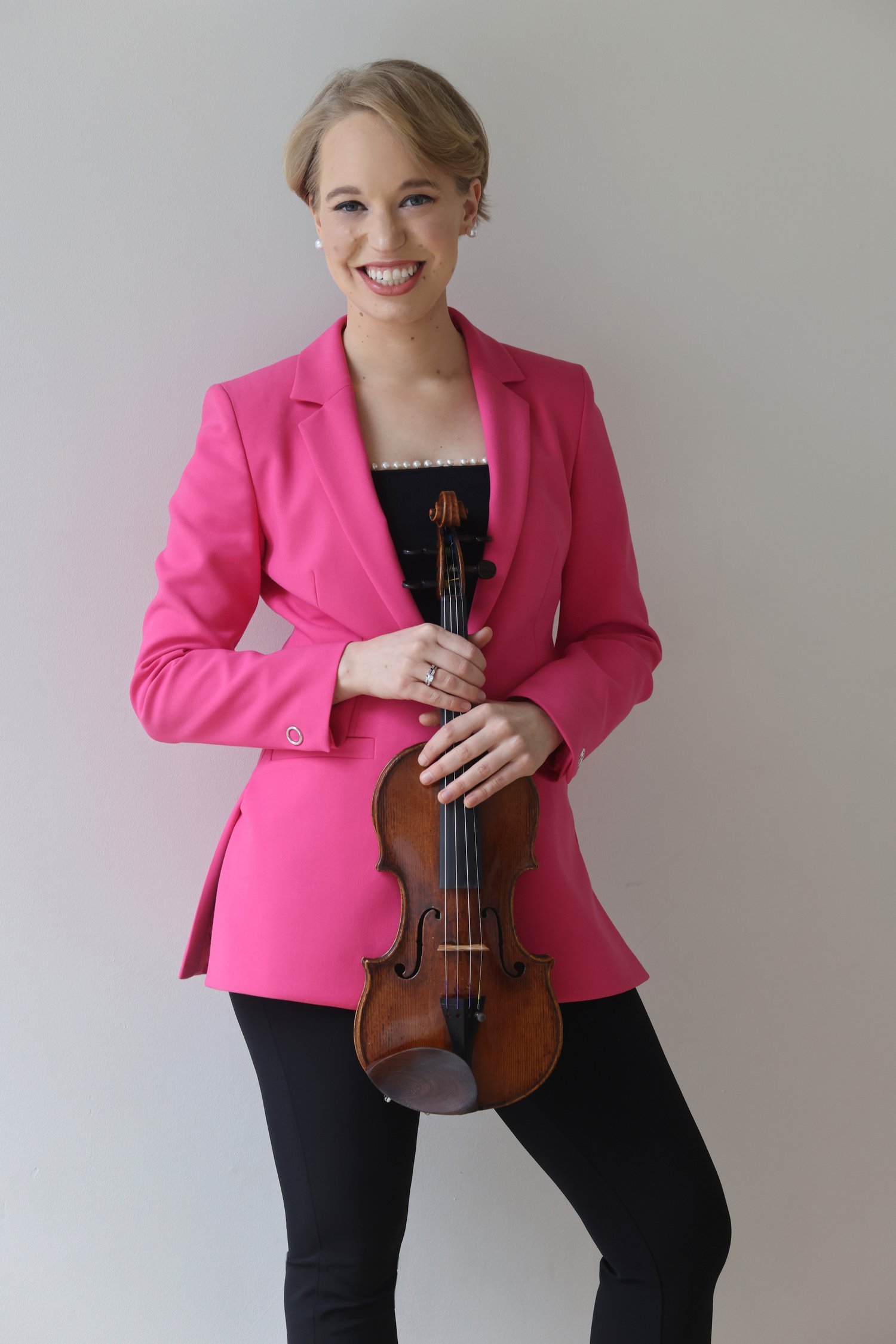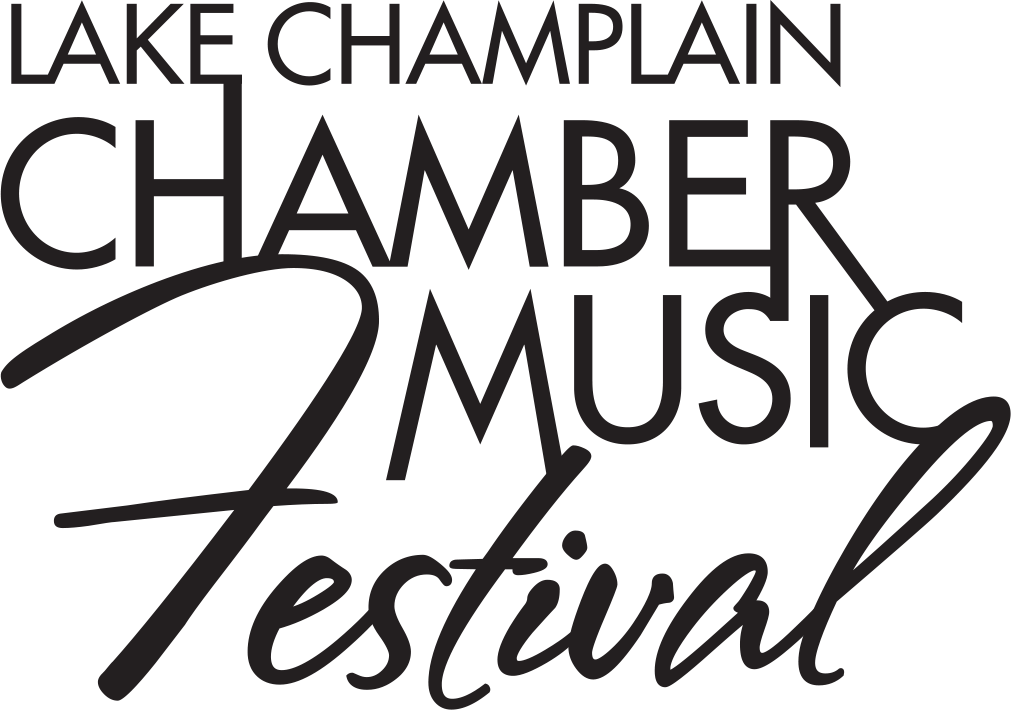Elley-Long Music Center at St. Michael’s College (map)
2:15 PM | Pre-Concert Conversation with Soovin Kim and David Serkin Ludwig
2:55 PM | CONCERT I: East to West
We ask our patrons to be in their seats by 2:55 as this concert will be broadcast live on Vermont Public Classical.
The exchange and fusion of different folk cultures have created a richer musical fabric for all of us to enjoy. Some of this exchange traveled along an east-west axis between Asia and Europe, much of it following the old routes of the Silk Road. In modern times, travel and immigration to the other side of the world are easier than ever, and the U.S., in particular, has become an ethnic melting pot. This program fuses influences from Persia through Azerbaijan and Austria to the United States, including Brahms’s beloved Hungarian Dances.
Reception and Meet-the-Artists to follow
CONCERT I: East to West
SUNDAY, AUGUST 18, 2024
General Admission $45
Under 30 $20
Students $5
PROGRAM
-
Artists
Romie de Guise-Langlois, clarinet -
Part 1 (Sari Gelin & Wildwood Flower)
Part 2 (Saye Chaman & Seeds of Love)Artists
Lucy Fitz Gibbon, soprano
Peter Stumpf, cello
Ieva Jokubaviciute, pianoProgram Note
In Gulistan, I bring together traditional songs from my Western and Middle Eastern heritage. The title comes from the thirteenth-century Persian poet Sa’di, whose monumental work Gulistan (“flower garden” in Persian) uses flowers as a metaphor for wisdom. Folk songs may be said to represent the collective wisdom of a culture, preserving generations of values and worldviews. Inspired by Sa’di, I chose folk songs that make reference to flowers, each with different metaphorical implications.
Part 1 combines the traditional Azerbaijani song “Sari Gelin” with the American folk song “Wildwood Flower.” The former describes a man helplessly longing for his distant lover, while the latter tells the story of a heartbroken woman whose lover has abandoned her. I intertwine the songs, suggesting a dialogue between two inconsolable lovers, each pining for the other.
Part 2 unites two metaphorical commentaries on the nature of love: the traditional Iranian song “Saye Chaman” and the English folk song “Seeds of Love.” I set the Iranian melody in an American folk style, and the English melody in a style evoking Iranian classical music. The melodies are often presented in counterpoint—a kind of musical metaphor for the mixture of cultures in my own life.
This work was written expressly for mezzo-soprano Fleur Barron, who shares with me a diverse heritage comprising Eastern and Western cultures.Today’s performance is the premiere of the soprano version, written for LCCMF and Lucy Fitz Gibbon.
©2023 Kian Ravaei -
I. Allegro molto (G minor)
IV. Poco sostenuto (F minor)
V. Allegro (F-sharp minor)Artists
Gloria Chien, piano
Ieva Jokubaviciute, pianoProgram Note
Johannes Brahms’ 21 Hungarian Dances, originally written for four-hand piano, brought the composer instant fame. Today, these dances are known best to audiences as orchestral works; Brahms arranged three of them himself.Brahms was one of several 19th century composers, along with Franz Liszt and Antonín Dvořák, who used] stylized “folk” music in their work. In 1853, the 20-year-old Brahms traveled through northern Germany with the Hungarian Roma violinist Ede Reményi, who introduced Brahms to Roma (Gypsy) music. Many of the tunes Reményi shared with Brahms were not “pure” Roma melodies, but arrangements created by itinerant Roma musicians, who traveled from city to city playing music in local cafes. The Roma melodies and rhythms entranced Brahms, and it is Roma style that permeates the Hungarian Dances.
The dances feature the distinctive rhythms and tempos of the czárdás, a traditional Hungarian folk dance characterized by abrupt changes of tempo. The juxtaposition of slow and fast sections without connecting transitions grabs the listener’s attention – not to mention the performers!
At the time Brahms created these arrangements, he believed them to be genuine folk melodies. After they were published in 1869, however, Hungarian composer and bandleader Béla Kéler accused Brahms of plagiarizing the melody of No. 5, which was lifted verbatim from Kéler’s czárdás, “Bártfai emlék” (Memories of Barfa). There is no evidence to suggest Brahms intentionally stole Kéler’s or anyone else’s music and passed it off as his own; Brahms was very conscientious about describing these dances as arrangements, not original compositions, and for that reason refused to assign them an opus number when they were published.
In 1933, an ethnomusicologist researching the origins of the Hungarian Dances melodies discovered they were all composed works by Hungarian composers, not folk tunes.
Full of off-beat syncopations, abrupt shifts of tempo and volume, vivid flourishes, and irrepressible energy, Brahms’ Hungarian Dances were an instant and profitable hit for both Brahms and his publisher Fritz Simrock. Their appeal has never dimmed, and they remain audience favorites today.
Of the three dances on today’s program, No. 5 is by far the most familiar, thanks to its numerous appearances in pop culture. Charlie Chaplin’s 1940 film The Great Dictator features Chaplin as a barber shaving a customer while Hungarian Dance No. 5 pours out of a nearby radio. No. 5 also appears in more than 20 video game soundtracks, and was the basis for the score of the 1943 Warner Brothers cartoon “Pigs in a Polka.” More recently, it has been featured in the TV shows “How I Met Your Mother,” “Highlander,” and “The Simpsons.”
© Elizabeth Schwartz
-
I. Allegro non troppo ma con brio
II. Grave ed appassionato - Allegretto vivace
III. Finale. Allegro energicoArtists
Soovin Kim, violin
Robyn Bollinger, violin
Milena Pajaro-van de Stadt, viola
Hsin-Yun Huang, viola
Peter Stumpf, celloProgram Note
Brahms’s chamber music oeuvre for strings includes two string sextets composed during the 1860s, three string quartets composed during the 1870s, and two string quintets composed after 1880. He had begun to compose a string quintet in 1862 – with the two-cello instrumentation made famous by Schubert – but that work was ultimately reconfigured as his Piano Quintet. The two mature string quintets, in contrast, feature the more Mozartian lineup of a string quartet with an added viola.Brahms had periods of great creative productivity during the summer retreats he spent away from the Viennese bustle in countryside resort villages. He would take long walks in nature, developing musical ideas in his mind, which he would sketch down upon his return; he would leave the work of polishing and editing to his return to Vienna. In 1882, he found respite in Bad Ischl, a village along the Traun River outside of Salzburg, where he composed most of his string quintet.
The three-movement construction of the work shows Brahms’s increasing propensity for concision of construction. The first movement of the quintet is built upon a theme evoking the pastoral atmosphere surrounding its composition, while the second theme adds rhythmic complexity, with the viola’s melody set in broad triplets, as if in a different meter. For the single middle movement, Brahms combines the traditional slow movement and scherzo, by alternating sections based on two baroque forms: the courtly sarabande, and the lively gavotte. A notorious perfectionist known for fastidious revisions and for destroying compositions that he deemed inferior; Brahms was obviously proud of his work on the quintet. He wrote to Clara Schumann that the work was among his finest; and he assured his publisher, Simrock, “you have never had such a beautiful work from me.”
©2024 Peter Asimov
ARTISTS
-

Soovin Kim
VIOLIN
-

Gloria Chien
PIANO
-

David Serkin Ludwig
RESIDENT COMPOSER
-

Lucy Fitz Gibbon
SOPRANO
-

Robyn Bollinger
VIOLIN
-

Hsin-Yun Huang
VIOLA
-

Milena Pajaro-van de Stadt
VIOLA
-

Peter Stumpf
CELLO
-

Ieva Jokubaviciute
PIANO

